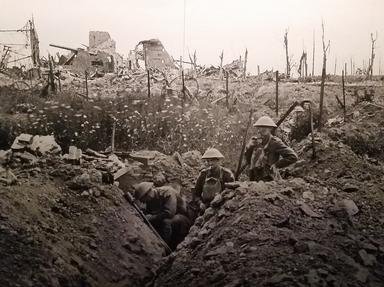Quiz Answer Key and Fun Facts
1. Consider the following statements on the Middle Eastern front in 1917. Which one is FALSE?
2. The Battle of Beersheba was part of which bigger battle?
3. The Allied plan went to great lengths in order to mislead the Turks into assuming an approaching attack on Gaza, rather than on Beersheba. Which of the following measures was NOT taken to that effect?
4. What was the approximate ratio of defenders to attackers in Beersheba on the morning of the battle (October 31, 1917)?
5. The huge Allied offensive effort depended on a single, most important factor which necessitated Beersheba's conquest within a single day. The Hebrew (and Arabic) meaning of the name "Beersheba" points directly to this factor. What is it?
6. Which of the following statements concerning the Turkish defensive positions at Beersheba is correct?
7. The battle started as planned, but as the clock approached 16:00 with sunset due at 16:50 the command realized that the ANZAC mounted division got delayed in an attrition battle at Tel el Saba. The battle plan had to be modified. What was the decision taken by Lt. Gen. Chauvel at this defining moment?
8. British PM David Lloyd George asked General Edmund Allenby to give Jerusalem to the British people by Christmas of 1917. Was this demand fulfilled?
9. UN resolution 181, passed in November 1947, is better known as the Partition Plan for Palestine. Which side was allotted Beersheba: the Arab or the Jewish?
10. Which of the following events took place in Beersheba in 2007 and 2008?
Source: Author
gentlegiant17
This quiz was reviewed by FunTrivia editor
bloomsby before going online.
Any errors found in FunTrivia content are routinely corrected through our feedback system.
